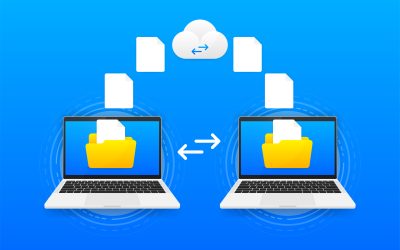This is a continuation of the blog “Why and How to Move Your Business to the Cloud?”
Cloud computing is not something new now. Cloud migration involves moving an organization’s data, infrastructure, applications and resources from the on-premises computing system into cloud systems. Based on a survey by Cisco, it is expected that 94% businesses will be cloud-based by 2021. Along with the benefits from business process outsourcing services, by moving to the cloud, businesses can also implement new features and upgrades more quickly. Also, cloud systems can make app integration less time-consuming. According to the market analysis from Report Buyer, owing to the cost-saving benefits offered, the demand for cloud computing is predicted to rise which will expand the global cloud computing market at a CAGR of over 16% during 2019-2023. While cloud systems are reliable, and highly available, these also carry certain security risks. Businesses moving their data and apps to the cloud must also be aware of such threats and risks to protect their organizations from data loss.
The most common cloud computing service models are
- IaaS: Infrastructure as a Service (e.g. AWS, Azure, Google Cloud Platform, Alibaba Cloud).
- PaaS: Platform as a Service (e.g. AWS Elastic Beanstalk, Heroku, Google App Engine, Engine Yard).
- SaaS: Software as a Service (e.g. Google G Suite, Office 365, Salesforce, NetSuite).
Cloud types include private, public and hybrid. For companies that are considering cloud migration for the first time, a lot of factors ranging from the benefits and the risks to the cloud service model and type that is right for your business must be considered.
How Equifax Used Cloud Security Model Post-breach
Search Cloud Computing has discussed how Equifax, the credit scoring company used cloud platforms to secure their data after the 2017 data breach. This data breach has led to a massive $700 million settlement and the company has recently made its data secure in three separate clouds. The company has used public cloud infrastructure to scale its cloud security program. They consider Google Cloud Platform (GCP) for its new data fabric and to deliver data and analytics to customers. This platform enables Equifax’s business units to create folders with projects within, creating hierarchies of control. The company’s expansion into the cloud continues and their goal is to be data center free within two years.
Risks Related to Cloud Migration
The latest report from Cloud Security Alliance highlights the top eleven significant business risks of cloud adoption as – data breaches, misconfiguration and inadequate change control, lack of cloud security architecture and strategy, insufficient identity, credential, access and key management, account hijacking, insider threat, insecure interfaces and APIs, weak control plane, metastructure and applistructure failures, limited cloud usage visibility and abuse and nefarious use of cloud services.
Other risks include:
Compliance standards: There are possibilities that certain compliance and regulatory standards may limit the information stored on cloud. Services from an external IT provider can also lead to legal implications. Risks are involved with the IT provider’s compliance to existing policies and contractual obligations with respect to data handling and business operations. Companies might not be able to maintain applications that store and retrieve very sensitive data in the cloud. Regulatory risk is associated with noncompliance with various national/geographic regulations, industry, or service specific legal and regulatory requirements.
Data security – Data security is another major barrier for cloud migration. Most companies store sensitive data in the cloud. In case of a breach in cloud service, there are high chances that cyber criminals can access your sensitive data. Data security risks also include data leakage risks due to shared infrastructure between different firms and lack of flexibility over data protection methods, such as encryption and implementation of specific controls by data type.
Cloud outages – Data outages may have hazardous consequences for business, customers, revenue and data. Most common outages include data backup, downtimes, and data centers going offline. If a data center goes offline for several hours, users will not be able to access data stored in the center for the entire time. However, cloud outages can be predicted and an ideal method to solve problems with outages is to prevent them. While moving your data to the cloud, make sure to have a back-up plan or a disaster recovery setup. If the data is available on multiple servers in multiple data centers or different regions, this may prevent such disasters. You could also spread your data to different providers.
Insecure APIs – Cloud Application Programming Interfaces (APIs) helps to interact with the cloud infrastructure to choose the computing, storage, and network resources for the concerned cloud applications or services. This API provides access to the direct and indirect cloud infrastructures and software as the services. However, insecure APIs can also bring a lot of vulnerabilities that can lead to serious security breaches and system meltdown. Such risks can be prevented by adopting an effective security model for Cloud provider’s interface. You can also consider employing strong authentication and access control methods.
Best Practices to Avoid Such Risks
- Plan carefully before implementing and avoid migrating everything to the cloud
- Make sure your cloud computing platform is compliant with applicable regulations and policies
- Set up proper logging, monitoring, and analysis of security events in the cloud
- Map your cloud migration strategy against long, mid and short-term goals
- Be ready to face integration challenges
- Find ways to improve IT cost efficiency
- Opt for the right cloud service model before migration, based on the benefits you require
- Train your staff on cloud risks and encourage the adoption of innovative technology
- Make arrangements to back up your data
While migrating your business to the cloud, make sure to consider such best practices. Also, while choosing back office outsourcing, services take effort to choose an experienced company.




